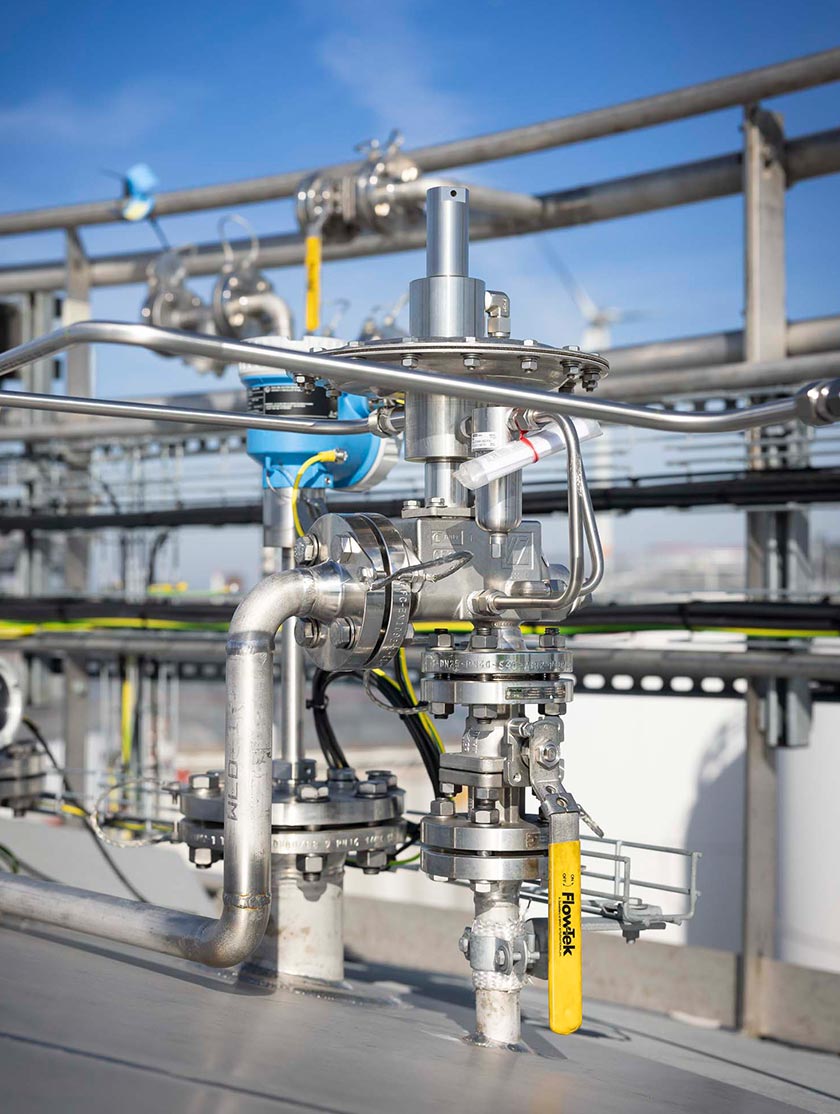Environmental Considerations for Selecting Pressure Reducing Regulators
In industrial and commercial applications, pressure reducing regulators play a key role in ensuring system stability by regulating downward pressure. Although their primary function is often considered in terms of efficiency, safety and cost-effectiveness, it is becoming increasingly important to consider the environmental impact associated with their selection and operation. This article discusses the key environmental aspects that should be considered when selecting a pressure reducing regulator to ensure sustainable, environmentally friendly and compliant practices.
Material Selection and Environmental Impact
One of the most important considerations is the type of materials used to manufacture the pressure reducing regulator. Materials should be:
- Corrosion-resistant and durable: Using stainless steel or environmentally friendly alloys extends the life of the device and reduces waste resulting from frequent replacement.
- Non-toxic and recyclable: Choosing metals and polymers that are recyclable or have minimal environmental impact helps reduce end-of-life disposal issues.
- Compliant with environmental standards: Materials should comply with regulations such as RoHS (Restriction of Hazardous Substances) or REACH to avoid harmful substances that could contaminate ecosystems.
Energy savings
A pressure reducing regulator indirectly affects energy consumption through the pressure control it provides. Selecting regulators that maintain precise pressure levels can reduce the energy requirements of downstream equipment such as pumps, compressors, and motors.
- Minimize pressure drop: Regulators designed for minimal pressure drop ensure less wasted energy is wasted on pressure reduction.
- Optimize set points: Properly calibrated pressure reducing regulators prevent overpressurization, which reduces unnecessary energy consumption and emissions.
Sealing and emission control
Pressure reducing regulators, especially in gas applications, must have excellent sealing properties to prevent leaks.
- Low emission designs: Regulators with advanced diaphragm seals and careful manufacturing tolerances reduce the emission of fugitive gases such as methane or refrigerants, which can contribute significantly to the greenhouse effect.
- Environmental compliance: Make sure that the selected regulator meets EPA or equivalent guidelines for leakage limits to minimize environmental contamination.
Compatibility with Environmentally Friendly Fluids
In some environments, pressure reducing regulators process biodegradable or environmentally friendly fluids.
- Material Compatibility: Regulators made of corrosion-resistant materials that will not be affected by such fluids should be selected. This prevents leakage and contamination.
- Avoid Fluid Contamination: No materials that could react with or damage the fluid should be used inside. This protects the environment from potentially hazardous waste.
Life Cycle Impacts and Maintenance
The environmental footprint of a pressure reducing regulator must be assessed throughout its life cycle.
- Ease of Maintenance: Regulators designed for easy maintenance reduce downtime and the amount of waste generated by replacing entire units.
- Availability of Spare Parts: Encourages repair over replacement, reducing scrapping of components.
- End-of-Life Disposal: Designers must consider whether the device can be easily disassembled for recycling materials or whether it requires special disposal methods.
Noise Pollution
Although often overlooked, pressure reducing regulators can contribute to operational noise that affects the surrounding environment and occupants.
- Incorporating Noise Reduction Features: Selecting regulators with integrated silencers or using positioners can reduce pollution noise.
- Strategic Layout: Installation considerations can minimize noise.
Using Smart and Digital Technologies
New pressure reducing regulators now feature sensors and IoT connectivity.
- Monitoring Environmental Impact: Smart regulators can provide real-time data on leaks, pressure fluctuations and maintenance needs, enabling timely interventions that minimize environmental risk.
- Optimizing System Performance: Digital controls enable fine tuning of pressure setpoints, thereby reducing energy waste.
Conclusion
Choosing a pressure reducing regulator is about more than just meeting pressure and flow specifications. Environmental considerations play a key role in the sustainability of your business. Material selection, energy efficiency, leak control, fluid compatibility, maintenance practices, noise control and integration of digital technologies all contribute to minimizing environmental impact. By prioritising these factors, businesses can ensure regulatory compliance, reduce their environmental impact and contribute to a greener future, while maintaining reliable pressure control in their systems.
Need the Right Pressure Reducing Regulator? Get Expert Help Selecting the Ideal Regulator Engineered for Performance |
Cashco’s pressure reducing regulators are designed for precise pressure control across a wide range of industrial applications—delivering reliability, safety, and efficiency. For more information about Cashco's regulators, view all models here .
Cashco is dedicated to ensuring you select the best solution for your tank protection needs. Need help choosing the right pressure reducing regulator? Contact us and our experienced team will gladly assist you in finding the ideal product!
Animated Guide: Pressure Reducing Regulator Function |
Discover the workings of a pressure reducing regulator in our animation video. Using the force-balance principle, this device reduces and maintains downstream pressure in a pipeline. Watch as we demonstrate how the regulator’s diaphragm and valve assembly create resistance to reduce upstream pressure. Learn how downstream flow demands impact the regulator, causing it to adjust and maintain a constant pressure.



